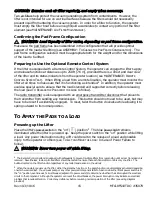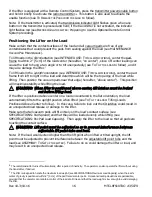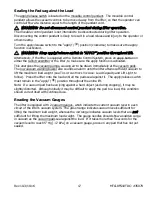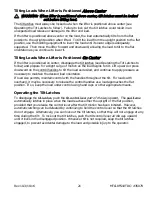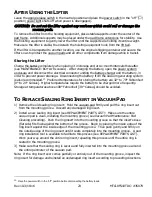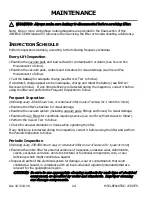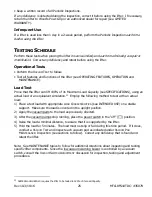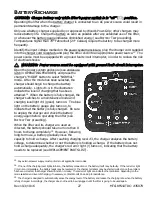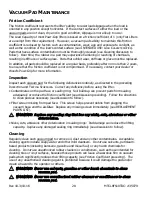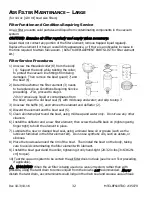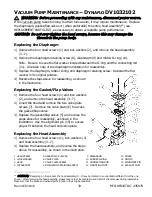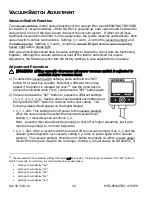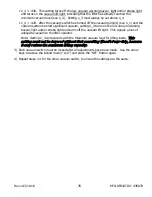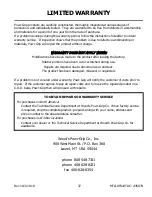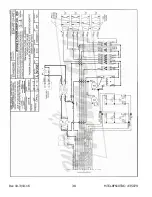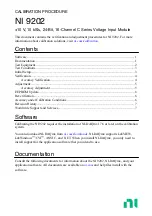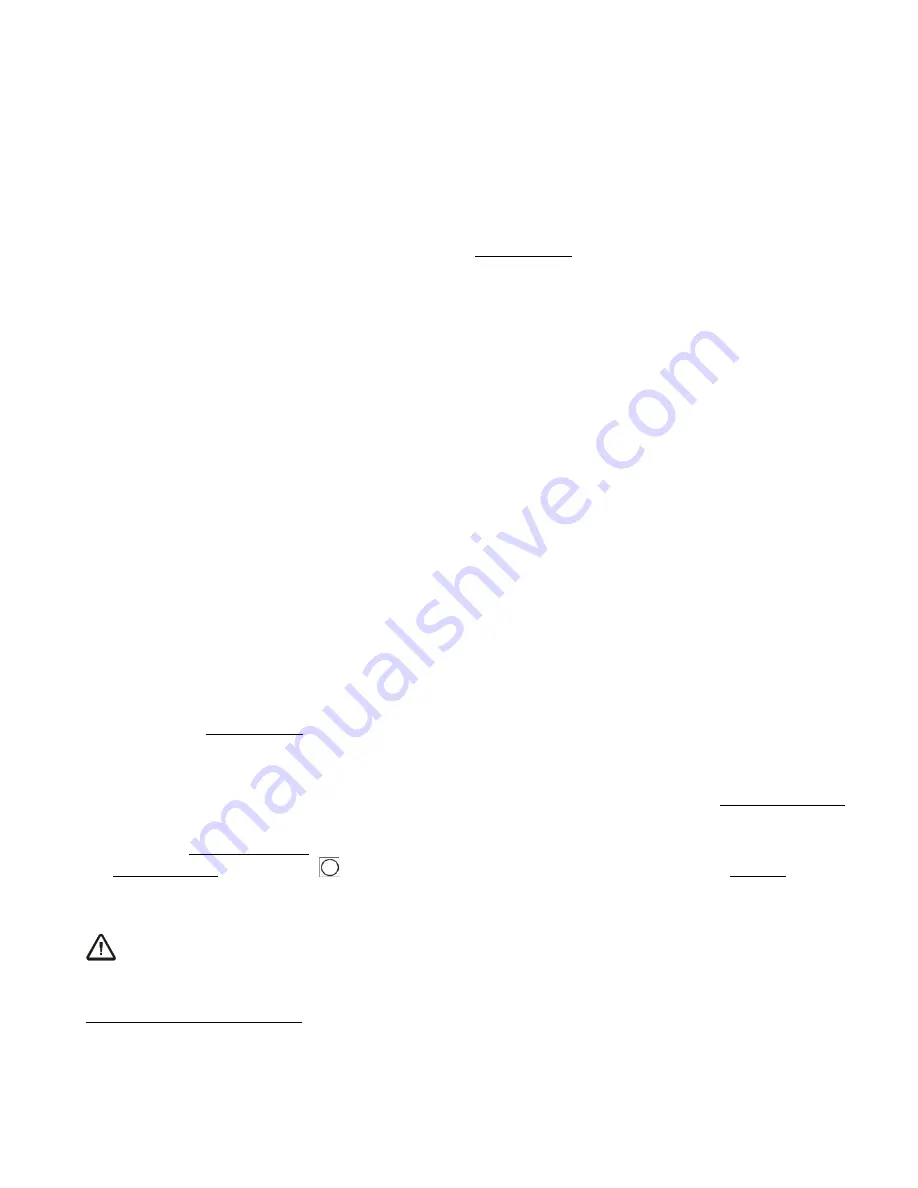
Rev 10.3/10-16
29
MTCL8FS10TDC: #35079
To prevent liquid from contaminating the vacuum system during cleaning, cover the suction hole
in the recess for the filter screen or make sure the pad faces downward. Use a clean sponge or
lint-free cloth to apply an authorized cleanser and wipe the pad clean. A toothbrush (or similar
brush with bristles
that do not harm rubber) may be used to remove contaminates clinging to
sealing edges.
Wipe all residue from the pad, and allow the pad to dry completely before using
the lifter.
Sealing Ring Replacement
1) Remove the old sealing ring insert: Hold the vacuum pad firmly and pull the sealing ring out
from the mounting groove. Discard any damaged sealing ring.
2) Install a new sealing ring insert (see REPLACEMENT PARTS LIST): Make sure the entire
vacuum pad is clean, including the mounting groove (see discussion preceding). Then push
the sealing ring into the mounting groove so that the insert's base (flat side) fits flush against
the bottom of the groove. Begin by placing the inside edge of the sealing ring against the
inside edge of the mounting groove. A pad ring installation tool is available to facilitate this
process (see REPLACEMENT PARTS LIST). Then push gently and firmly on the outside edge
of the sealing ring until it seats completely into the mounting groove. Work your way around
the sealing ring, repeating this process until the entire ring is seated in the mounting groove.
3) Make sure that the sealing ring is secure and fully inserted into the mounting groove around
the entire perimeter of the vacuum pad.
Note: If the sealing ring ever comes partially or entirely out of the mounting groove, inspect the
sealing ring for damage and reinstall an undamaged sealing ring according to preceding
directions.
V
ACUUM
T
EST
Test the vacuum system for leakage routinely, as directed in the preceding I
NSPECTION
and
T
ESTING
S
CHEDULES
.
1) Clean each vacuum pad as previously directed (see V
ACUUM
P
AD
M
AINTENANCE
: Cleaning).
2) Apply the lifter to a clean, smooth, nonporous surface. The surface should be flat or possess
no more curvature than the lifter is designed for (if any).
When the pumping cycle is
completed, the vacuum level should register above 16" Hg [-54 kPa] on the vacuum gauges
(if not, see V
ACUUM
S
WITCH
A
DJUSTMENT
to follow).
3) After the vacuum pumps stop running, leave the pads attached to the surface and place the
power switch in the “off” ( ) position, to interrupt the energy flow from the battery.
4) Monitor the vacuum gauges:
The vacuum level should not decrease by more than 4" Hg [-14
kPa] in 10 minutes.
WARNING: If lifter fails vacuum test, discontinue use immediately.
Correct any deficiency in the vacuum system before using the lifter. Contact Wood’s Powr-Grip
or an authorized dealer for assistance.
16
If these cleaning methods are not successful, contact Wood’s Powr-Grip or an authorized dealer for assistance.
17
Any test material used must be fully and independently supported, and capable of bearing the lifter’s weight. Do not use the
lifter to lift the test material during the vacuum test.
Summary of Contents for MTCL8FS10TDC
Page 2: ...View Quick Start Guide...
Page 40: ...Rev 10 3 10 16 38 MTCL8FS10TDC 35079...
Page 41: ...Rev 10 3 10 16 39 MTCL8FS10TDC 35079...
Page 42: ...Rev 10 3 10 16 40 MTCL8FS10TDC 35079...
Page 43: ...Rev 10 3 10 16 41 MTCL8FS10TDC 35079...
Page 44: ...Rev 10 3 10 16 42 MTCL8FS10TDC 35079...

